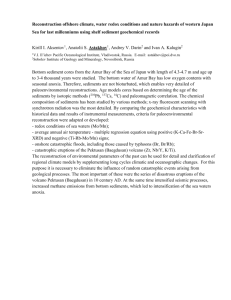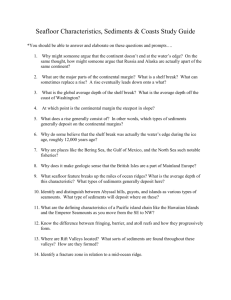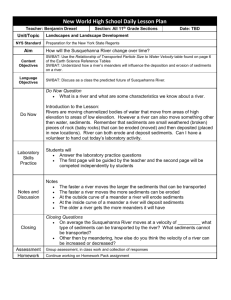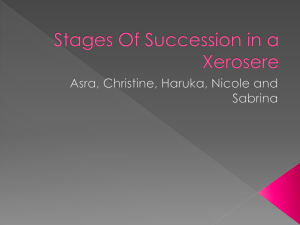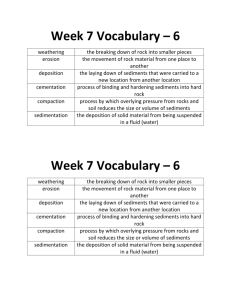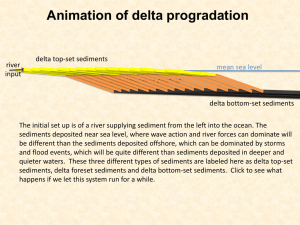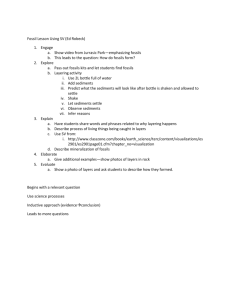Determination of chronic toxicity in sediments impacted by
advertisement
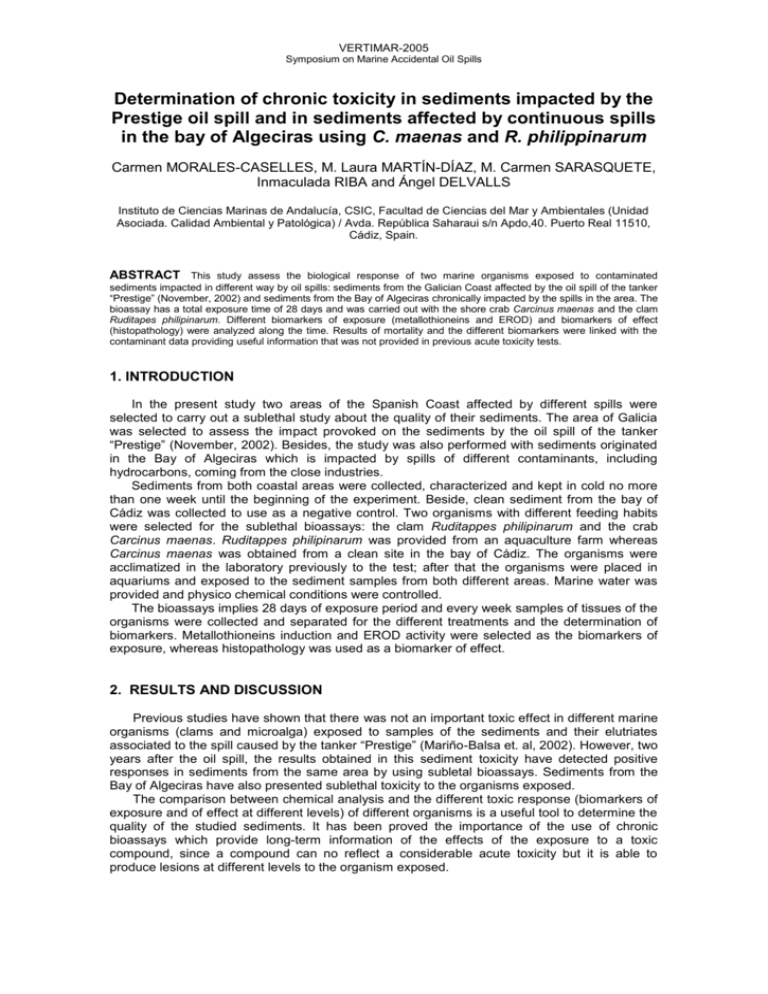
VERTIMAR-2005 Symposium on Marine Accidental Oil Spills Determination of chronic toxicity in sediments impacted by the Prestige oil spill and in sediments affected by continuous spills in the bay of Algeciras using C. maenas and R. philippinarum Carmen MORALES-CASELLES, M. Laura MARTÍN-DÍAZ, M. Carmen SARASQUETE, Inmaculada RIBA and Ángel DELVALLS Instituto de Ciencias Marinas de Andalucía, CSIC, Facultad de Ciencias del Mar y Ambientales (Unidad Asociada. Calidad Ambiental y Patológica) / Avda. República Saharaui s/n Apdo,40. Puerto Real 11510, Cádiz, Spain. ABSTRACT This study assess the biological response of two marine organisms exposed to contaminated sediments impacted in different way by oil spills: sediments from the Galician Coast affected by the oil spill of the tanker “Prestige” (November, 2002) and sediments from the Bay of Algeciras chronically impacted by the spills in the area. The bioassay has a total exposure time of 28 days and was carried out with the shore crab Carcinus maenas and the clam Ruditapes philipinarum. Different biomarkers of exposure (metallothioneins and EROD) and biomarkers of effect (histopathology) were analyzed along the time. Results of mortality and the different biomarkers were linked with the contaminant data providing useful information that was not provided in previous acute toxicity tests. 1. INTRODUCTION In the present study two areas of the Spanish Coast affected by different spills were selected to carry out a sublethal study about the quality of their sediments. The area of Galicia was selected to assess the impact provoked on the sediments by the oil spill of the tanker “Prestige” (November, 2002). Besides, the study was also performed with sediments originated in the Bay of Algeciras which is impacted by spills of different contaminants, including hydrocarbons, coming from the close industries. Sediments from both coastal areas were collected, characterized and kept in cold no more than one week until the beginning of the experiment. Beside, clean sediment from the bay of Cádiz was collected to use as a negative control. Two organisms with different feeding habits were selected for the sublethal bioassays: the clam Ruditappes philipinarum and the crab Carcinus maenas. Ruditappes philipinarum was provided from an aquaculture farm whereas Carcinus maenas was obtained from a clean site in the bay of Cádiz. The organisms were acclimatized in the laboratory previously to the test; after that the organisms were placed in aquariums and exposed to the sediment samples from both different areas. Marine water was provided and physico chemical conditions were controlled. The bioassays implies 28 days of exposure period and every week samples of tissues of the organisms were collected and separated for the different treatments and the determination of biomarkers. Metallothioneins induction and EROD activity were selected as the biomarkers of exposure, whereas histopathology was used as a biomarker of effect. 2. RESULTS AND DISCUSSION Previous studies have shown that there was not an important toxic effect in different marine organisms (clams and microalga) exposed to samples of the sediments and their elutriates associated to the spill caused by the tanker “Prestige” (Mariño-Balsa et. al, 2002). However, two years after the oil spill, the results obtained in this sediment toxicity have detected positive responses in sediments from the same area by using subletal bioassays. Sediments from the Bay of Algeciras have also presented sublethal toxicity to the organisms exposed. The comparison between chemical analysis and the different toxic response (biomarkers of exposure and of effect at different levels) of different organisms is a useful tool to determine the quality of the studied sediments. It has been proved the importance of the use of chronic bioassays which provide long-term information of the effects of the exposure to a toxic compound, since a compound can no reflect a considerable acute toxicity but it is able to produce lesions at different levels to the organism exposed. VERTIMAR-2005 Symposium on Marine Accidental Oil Spills REFERENCES Mariño-Balsa, J.C., Pérez, P., Estévez-Blanco, P., Saco-Álvarez, L., Fernández, E., Beiras, R. (2002). Assessment of the toxicity of sediment and seawater polluted by the Prestige fuel spill using bioassays with clams ( Venerupis pollastra, Tappes decussatus and Venerupis rhomboideus) and the microalga Skeletonema costatum. Cienc. Mar., 29 (1): 115-122.

